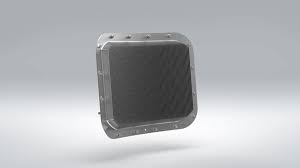Introduction
Oil coolers are essential components in industrial systems, helping regulate the temperature of hydraulic oils, lubricants, and other fluids critical for machinery operation. Maintaining the optimal temperature of these fluids is crucial for ensuring machinery runs smoothly and efficiently, preventing overheating, increased wear, and system failures. To maximize the efficiency of oil coolers, careful consideration must be given to their design and regular maintenance. This involves selecting the right materials, designing for optimal heat transfer, and ensuring that maintenance practices such as cleaning and monitoring fluid levels are followed.
Design Considerations for Efficient Oil Coolers
Optimal Heat Exchange Surface Area:
- One of the key design aspects that impact the efficiency of an oil cooler is the heat exchange surface area. The larger the surface area available for heat transfer, the more effectively the oil cooler can dissipate heat. For better performance, manufacturers often use materials with high thermal conductivity, such as copper or aluminum, which enable more efficient heat transfer.
Material Selection:
- The choice of materials is crucial for both heat transfer efficiency and durability. Stainless steel, aluminum, and copper alloys are commonly used in oil cooler design due to their excellent thermal conductivity and resistance to corrosion. The material also impacts the longevity and resistance to various fluids, preventing scaling, rust, or wear in harsh operating environments.
Flow Arrangement (Counter-Flow vs. Parallel Flow):
- The arrangement of the oil and cooling fluid flow inside the cooler can significantly affect performance. Counter-flow heat exchangers, where the fluids flow in opposite directions, provide a higher temperature differential and enhanced heat exchange. This results in more efficient cooling compared to parallel flow designs, where fluids move in the same direction, leading to less effective heat transfer.
Size and Compactness:
- While a larger oil cooler may offer more cooling capacity, it’s important to balance size with space constraints in industrial applications. Compact designs using stacked tube configurations or compact plate heat exchangers allow for efficient cooling while occupying minimal space, which is especially crucial in limited installation areas.
Air or Liquid Cooling:
- Oil coolers can either use air or liquid to absorb and dissipate heat. Air-cooled oil coolers are typically more compact and require no external cooling medium, but they are generally less efficient than liquid-cooled systems, which use water or another cooling fluid to absorb heat. The choice between air and liquid cooling depends on the application and available resources.
Pressure and Temperature Ratings:
- For maximum efficiency, oil coolers must be designed to handle the operating pressures and temperatures of the system they serve. A cooler that operates outside of its design parameters can lead to breakdowns, leaks, or inefficient performance. Ensuring that the cooler is properly rated for the specific system conditions is crucial for efficiency.
Maintenance Tips for Maximizing Oil Cooler Efficiency
Regular Cleaning and Inspection:
- Over time, oil coolers can accumulate dirt, dust, or scale, which can obstruct heat transfer surfaces and reduce cooling efficiency. Regular cleaning, either through mechanical means or by using chemical cleaning agents, can remove buildup and keep the cooler functioning at its optimal level. Inspections should also check for corrosion or wear and tear on seals and tubing.
Monitoring Fluid Levels and Quality:
- Low fluid levels or degraded oil can impair heat transfer and cause system inefficiency. Monitoring and maintaining the proper oil level, as well as ensuring that the oil is clean and free of contaminants, are essential for the long-term performance of the cooler. Filters and strainers should be regularly replaced to prevent debris from entering the system.
Check for Leaks and Blockages:
- Oil coolers are designed to withstand specific pressures, and any leaks or blockages can significantly reduce their efficiency. Conducting routine checks for leaks in the seals, hoses, or connections, as well as ensuring there are no blockages in the cooling channels, will help keep the cooler operating at maximum capacity.
Temperature Monitoring:
- Keeping track of the temperature of the oil and the cooler is vital. If the oil temperature rises above the recommended range, it can indicate that the cooler is not performing efficiently. Monitoring temperature through gauges or sensors can help detect any issues early and prevent system failure.
Regular System Flushing:
- Over time, oils can accumulate contaminants like particles, sludge, or water that affect cooling efficiency. Flushing the system at regular intervals helps to remove these contaminants and prevents clogging, which can degrade the performance of the oil cooler. This is particularly important for systems that operate in harsh environments where contamination is more likely.
Conclusion
In conclusion, maximizing the efficiency of oil coolers is vital for reducing energy consumption, prolonging equipment life, and ensuring smooth operation in industrial systems. By focusing on critical design factors such as heat exchange surface area, material selection, and fluid flow arrangements, and coupling these with effective maintenance practices like regular cleaning, inspection, and monitoring, industries can significantly improve the performance of their cooling systems. Properly designed and well-maintained oil coolers not only enhance operational efficiency but also minimize downtime, reduce costs, and contribute to the overall sustainability of industrial processes.

